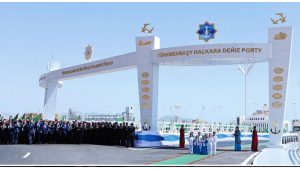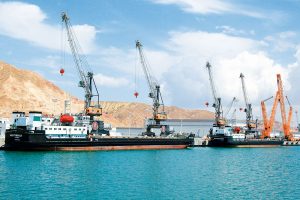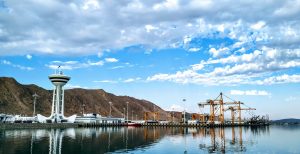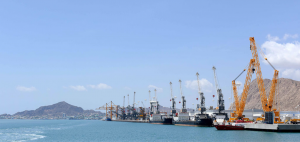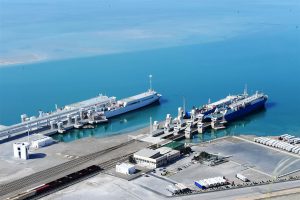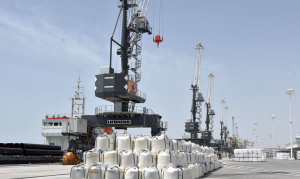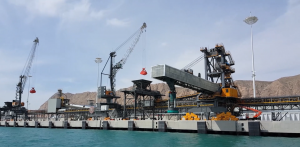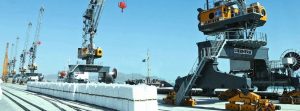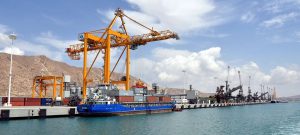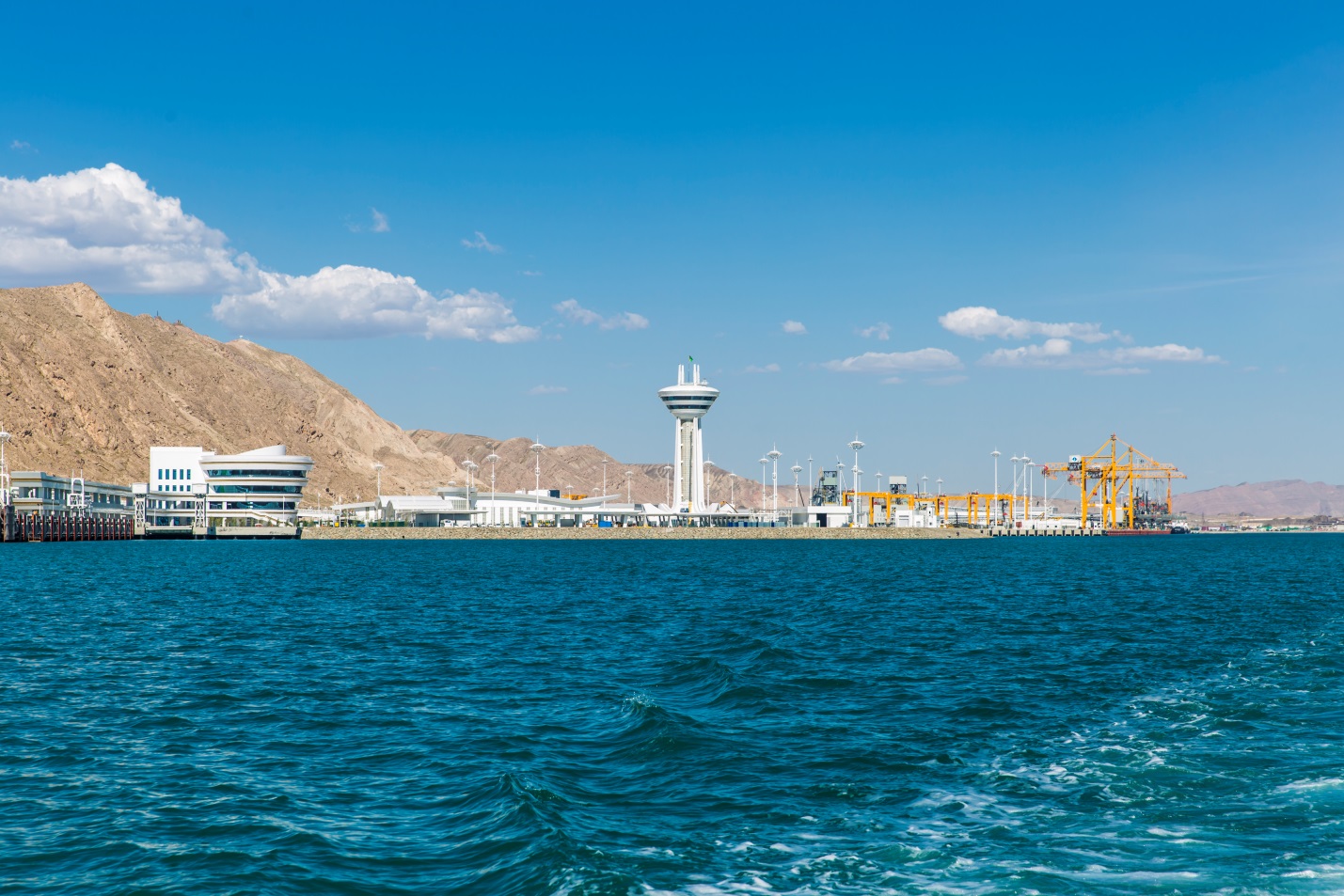

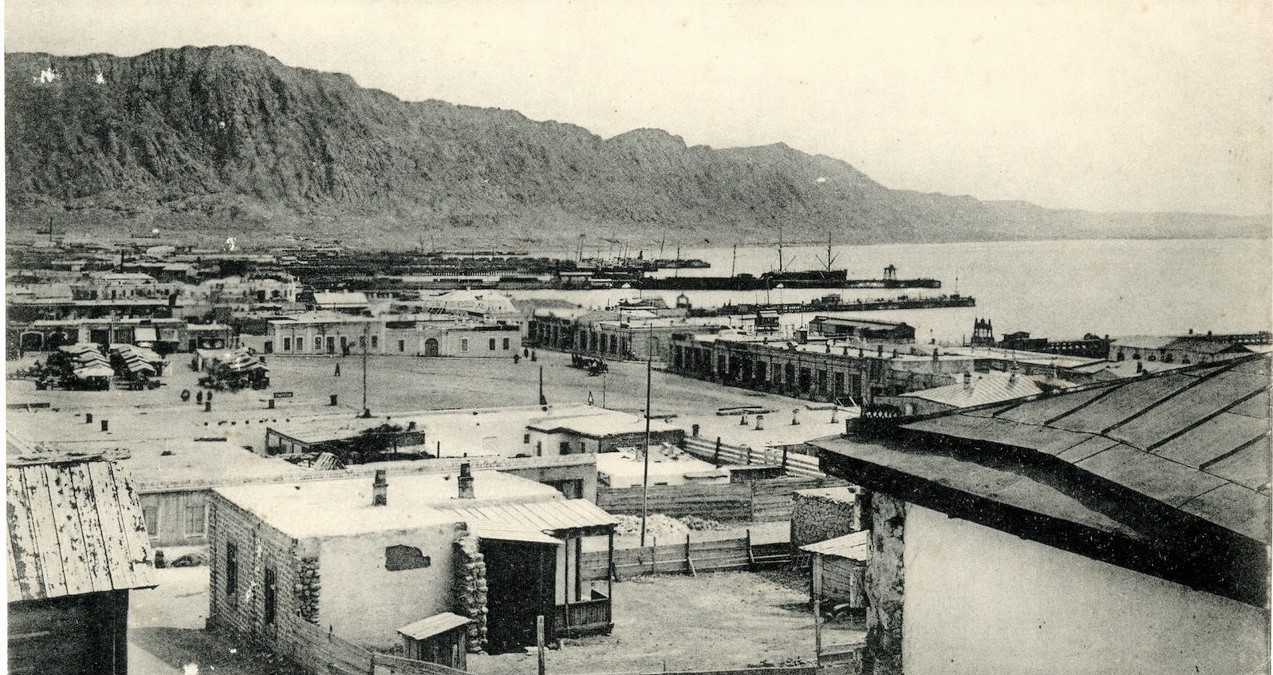
Sea port in the years of 1800-2000
Sea port is located in the city of Turkmenbashi. The port was founded in October 1896 on the eastern shore of the Caspian Sea. In order to consolidate and streamline the transportation of goods and passengers, on January 1, 1903, the Merchant Seaport Authority was formed. Cargo traffic has been increasing over the years, so the idea of building a ferry has arisen. Since 1959, the construction of the ferry began on the port territory. In 1962, the ferry service began to take regular flights on the Krasnovodsk-Baku line. Ferry transportation has significantly accelerated the delivery of goods.
In 2000-2003, a large-scale reconstruction of the port was made. The old ones were reconstructed and new moorings for ships were built, as well as warehouses and a number of other objects, and modern equipment was acquired. This made it possible to provide port services at a higher level.
In 2011 it was announced that the port of Turkmenbashi will be completely reconstructed.
Turkmenbashi International sea port in the years of 2000-2020
Considering the convenient geo-economic location of Turkmenistan, according to the “Main program of improving Turkmenbashi International Seaport and Turkmen Trade Fleet by 2020”, the President’s Resolution on 29 may 2014, the Turkmenbashi International Sea Port envisaged as one of the main sections of the Great Silk Ways. In 2014, the marine passenger station was opened. In 2018, the new international sea port of Turkmenbashi was opened.
Turkmenbashi International sea port – The total area of the port is more than 150 hectares. To ensure the approach of vessels to the berth, a huge amount of work was performed to excavate about 10 million cubic meters of soil and deepen the sea floor.
The total length of the berth with a width of 20 meters is 3,600 meters, which allows several cargo and passenger vessels to simultaneously arrive, depart and serve in the port.
The port includes ferry and passenger terminals, container terminals, General and bulk cargo terminals.
In addition to berthing facilities, numerous coastal infrastructure facilities have been built in the port, including transport facilities: roads with overpasses with a total length of almost 4,000 meters and about 30,000 meters of railway tracks.
The total capacity of the new port is on average about 17 million tons of cargo per year, excluding petroleum products, including 300 thousand passengers, 75 thousand trucks, 400 thousand containers, 3 million tons of bulk and 4 million tons of General cargo, at the same time can received 17 vessels.
Ferry passenger terminal – The buildings of the passenger terminal allow providing high-quality service for passengers, trucks and vehicles between the sea ports of the Caspian Sea. At this terminal, we have a technical inspection center, a disinfection building, a railway control building, and a truck stop. With a total area of 230,000 square meters, the passenger terminal is able to serve 300,000 passengers and 75,000 vehicles per year. On the territory of the terminal there is a hotel with 50 seats. The terminal building is capable of simultaneously serving 800 passengers, as well as receiving four ferries.
The terminal has a berth equal to 256 meters, which is intended for passing trains on one side and vehicles on the other.
The building of the passenger terminal has a ticket office, currency exchange, information Desk, registration Desk, quarantine zone for plants and animals, offices, SIP-hall, baggage compartments, passport control, automated equipment, electronic aisles, terraces for outdoor recreation.
Container terminal – With a total area of 249,000 square meters, the container terminal handles 400,000 containers per year. With a total berth length of 480 meters, the terminal is able to simultaneously receive 3 vessels with a full cargo capacity of up to 5000 tons, which contributes to the development of exports and imports, connecting the logistics infrastructure of Turkmenistan; Railways, air and sea lines. The terminal has 2 ship cranes with a capacity of 70 tons each, capable of handling 30 containers per hour, 2 railway cranes with a capacity of 48 tons each and 6 wheeled cranes with a capacity of 45 tons each, as well as vehicles for moving and stacking containers with a capacity of 25, 45 and 50 tons. The terminal has covered warehouses with a total area of 9984 square meters, and a sorting warehouse with a total area of 3060 square meters.
The ship control center was built to ensure safe navigation of vessels entering the port, and is equipped with modern navigation equipment of world standards recommended by the International Maritime organization. In addition, a fire safety building and a medical center equipped with modern equipment are located next to this building.
Terminal for bulk cargo – With a total capacity of 3,000,000 tons of cargo per year, the bulk cargo terminal is built to handle and store bulk cargo such as iron ore, cement, coal, cereals, sugar, salt and other bulk cargo. With a berth length of 440 meters, the terminal is able to simultaneously service 3 vessels with a full load capacity of up to 5000 tons each. The terminal is equipped with 3 railway cranes with a capacity of 42 tons, 2 belt conveyors with a capacity of 650 tons of bulk cargo per hour, 5 wheel loaders with a capacity of 20 tons and 1 mobile crane with a capacity of 20 tons. In addition to grain storage, the terminal has 14 silos with a total capacity of 35,000 cubic meters and 8 cement silos with a total capacity of 6000 cubic meters. The terminal has an open warehouse area of 37,000 square meters and covered warehouses with a total area of 8512 square meters.
General cargo terminal – The total area of the General cargo terminal is 261,000 square meters. With the capacity to handle 4,000,000 tons of cargo per year, the terminal is designed for loading and unloading steel, iron, wood materials, vehicles, equipment and heavy cargo. With a berth length of 625 meters, the General cargo terminal can simultaneously handle 4 vessels with a full cargo capacity of 5000 tons. This terminal has 6 railway cranes with a capacity of 20 tons and 1 wheeled mobile crane with a capacity of 84 tons, as well as two 330-ton cranes manufactured by Liebherr and a 1,500-ton conveyor for heavy and oversized cargo. There are also various forklifts with a capacity of 3,5,16,30,60 tons. The terminal has an open warehouse with an area of 7,500 square meters and covered warehouses with an area of 26,394 square meters.
Polypropylene terminal – It can process up to 120,000 tons of polypropylene per year. It can simultaneously accept up to 3 vessels with a cargo capacity of up to 5000 tons. The terminal has a closed warehouse with a capacity of up to 18,750 tons.
